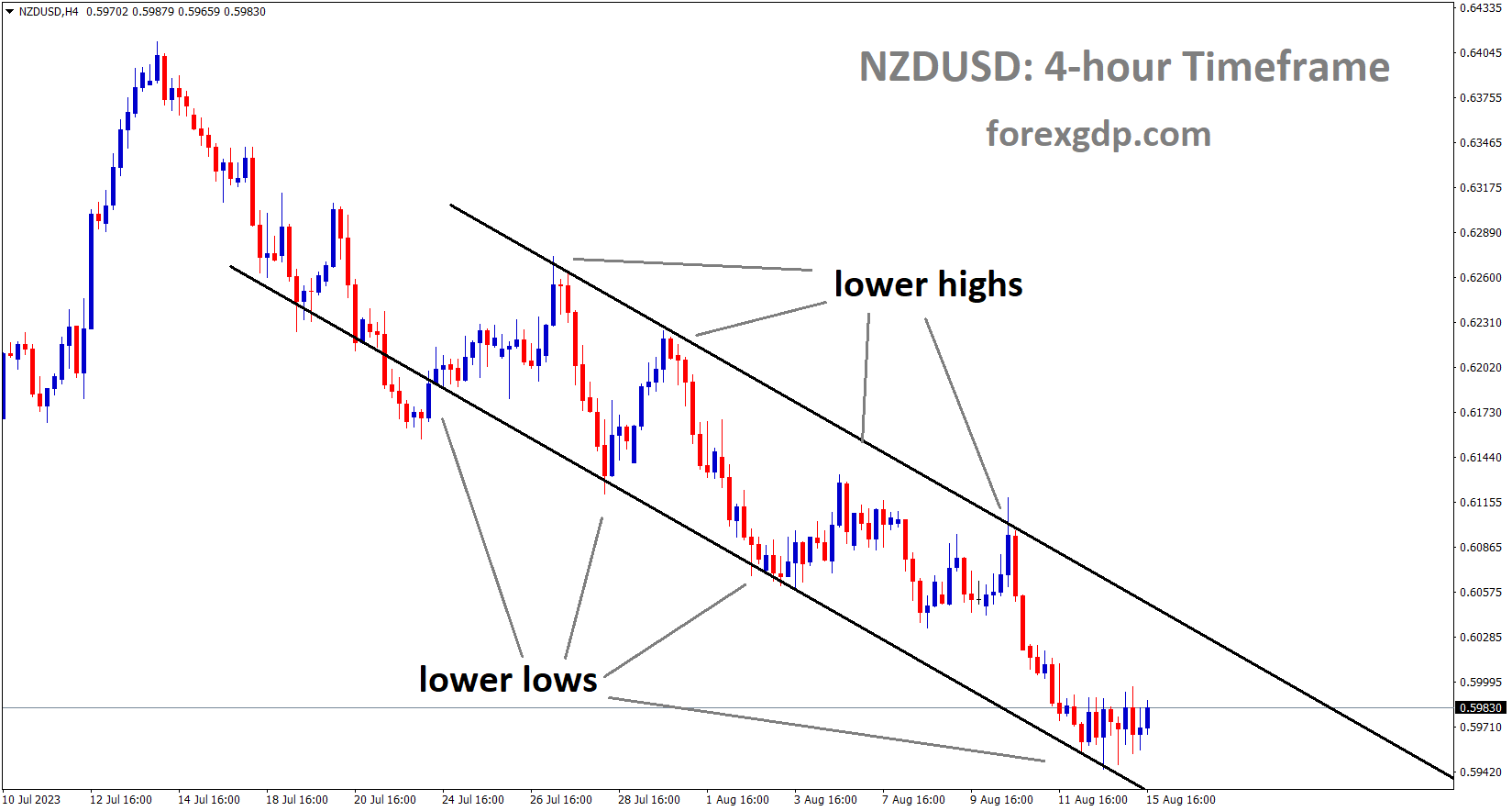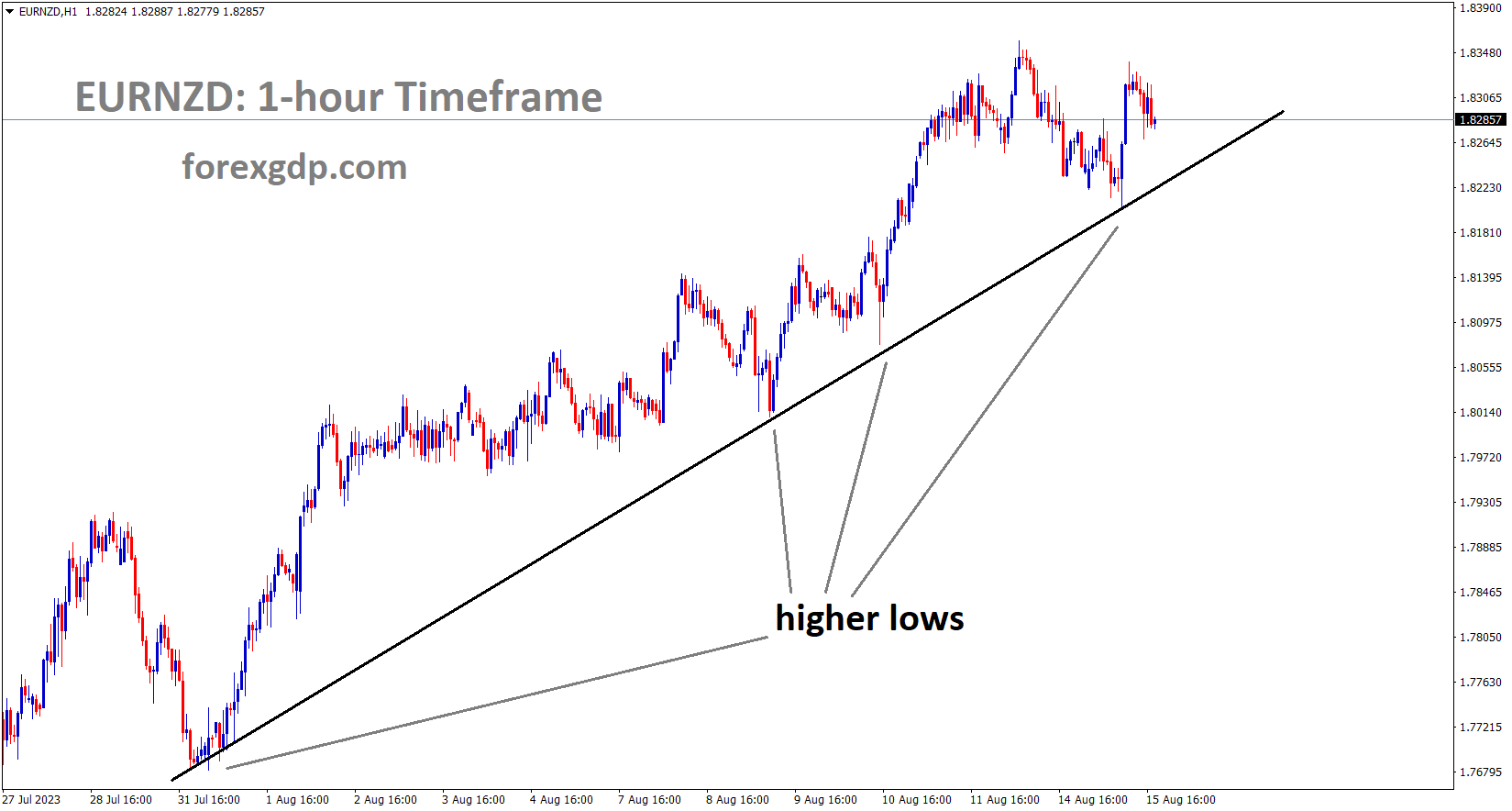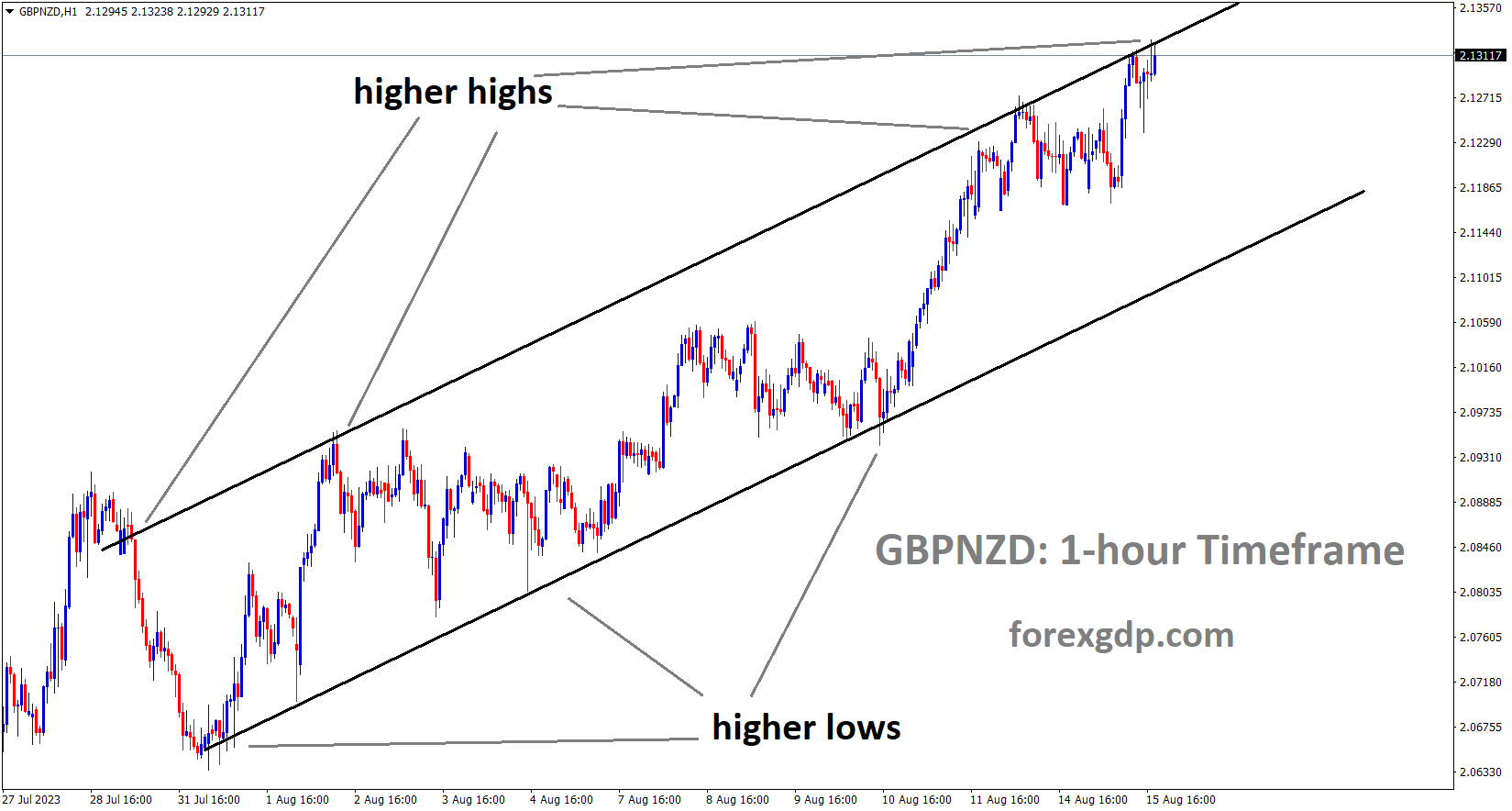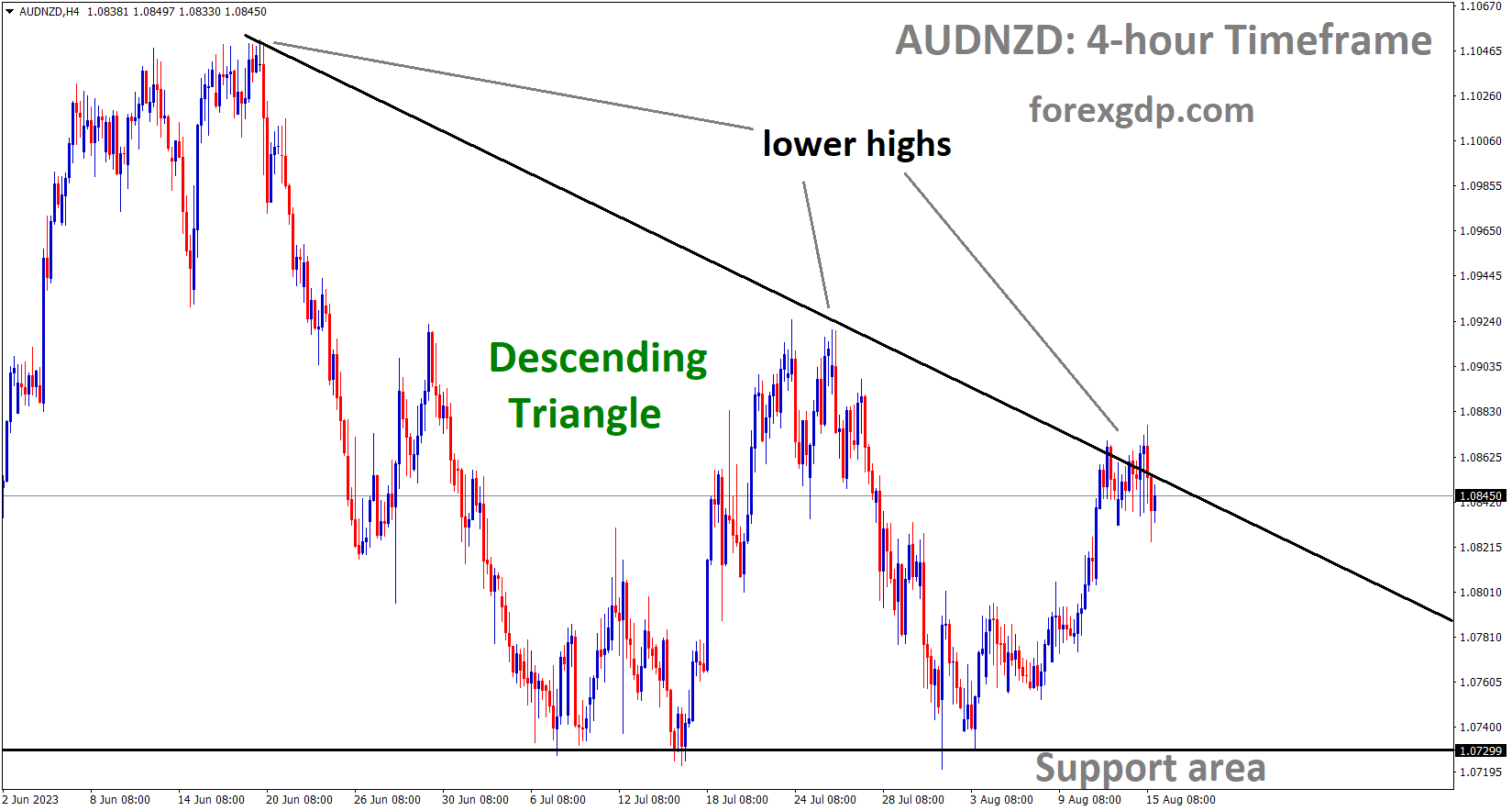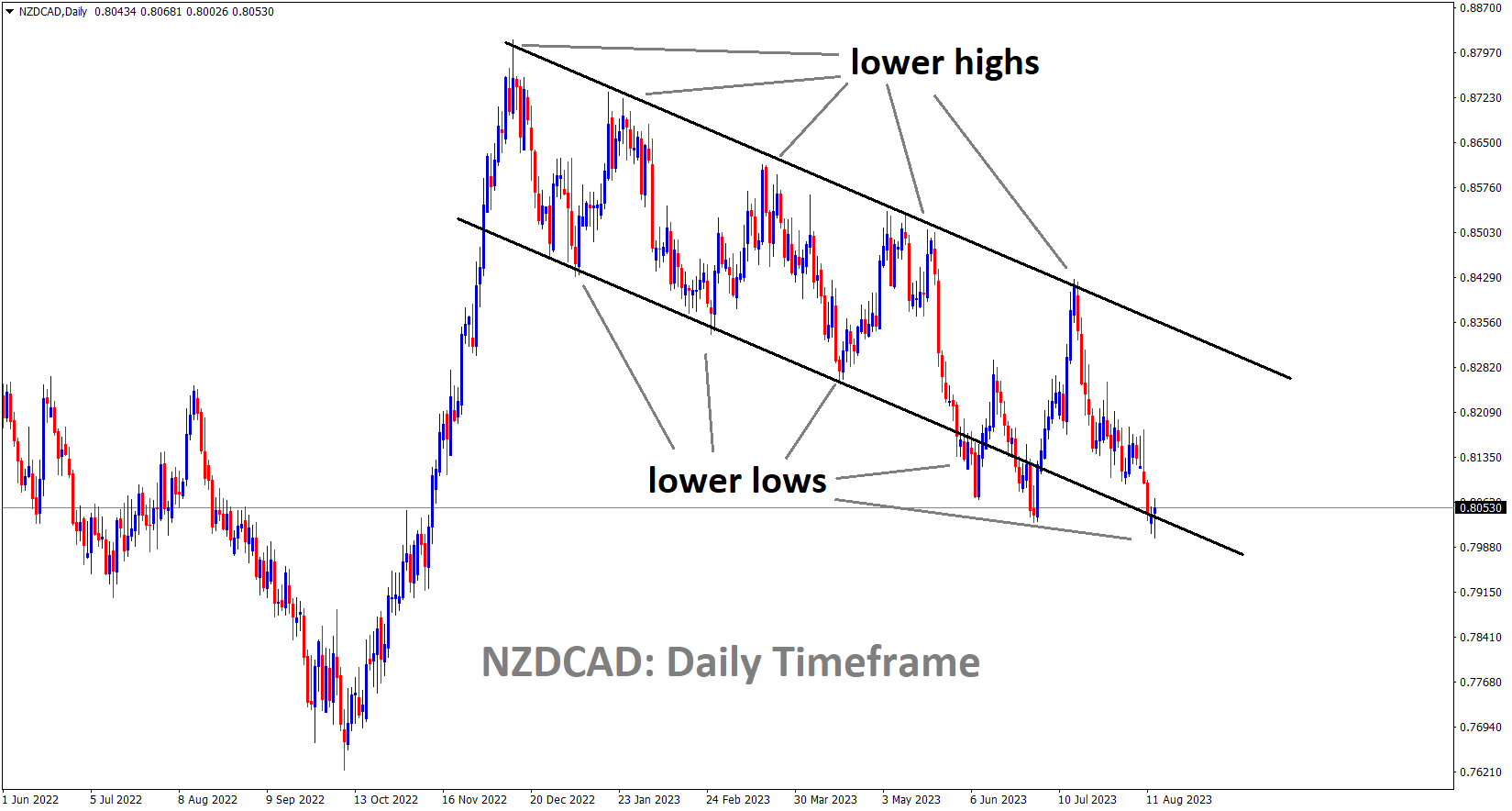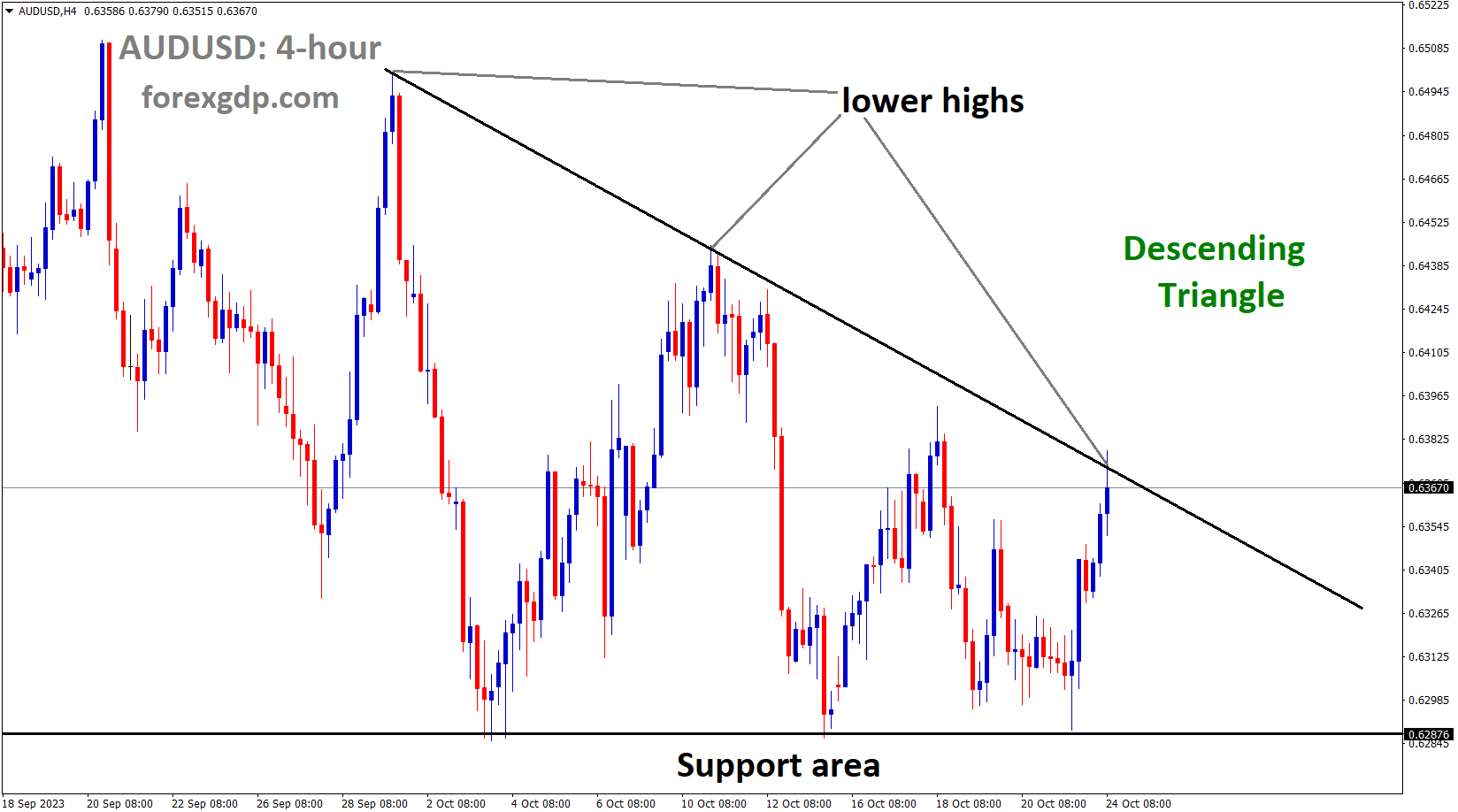NZDUSD is moving in the Descending channel and the market has rebounded from the lower low area of the channel
RBNZ is anticipated to maintain the rates at 5.50%, marking a 14-year high during this meeting. The decline in both business and consumer confidence has contributed to the weakening of the NZD currency. If further tightening occurs, concerns about a potential recession in the New Zealand economy are likely to arise.
The New Zealand economy is a complex interplay of various factors, including inflation expectations, monetary policy decisions, and exchange rate dynamics. This comprehensive analysis delves into the recent developments and trends in these domains, shedding light on the Reserve Bank of New Zealand’s (RBNZ) Survey of Expectations, the nation’s macroeconomic indicators, and the market responses to these factors.
Inflation Expectations: RBNZ’s Survey and Other Indicators

Inflation expectations are crucial indicators of an economy’s health and trajectory. The RBNZ’s Survey of Expectations, released recently, provides valuable insights into these expectations. Notable trends include a marginal uptick in the 2-year ahead measure, contrasting with a broader decline across the curve. While 1-year ahead inflation expectations fell, the 5-year and 10-year ahead measures also experienced slight declines. Despite these fluctuations, the expectations remain above the 2% midpoint of the target band, indicating the persistence of inflationary pressures.
EURNZD is moving in an Ascending trendline and the market has rebounded from the higher low area of the trend line
In addition to the RBNZ’s survey, other indicators such as Business Outlook and Consumer Confidence surveys have exhibited downward trends in inflation expectations over recent months. However, these figures remain higher than the RBNZ’s survey of professional forecasters. Intriguingly, the ANZ-Roy Morgan consumer confidence survey showed an unexpected increase in 2-year ahead inflation expectations, coinciding with changes in fuel excise and transport subsidies. Moreover, households’ inflation expectations, as per the RBNZ’s survey, have remained elevated, further complicating the overall inflation outlook.
Monetary Policy and RBNZ’s August Monetary Policy Statement
The RBNZ’s monetary policy decisions play a pivotal role in managing inflation and fostering economic stability. The central bank’s stance has been one of vigilance and restraint. Despite a gradual downtrend in inflation expectations, the current measures remain above the desired target. The RBNZ’s “watch, worry and wait” approach underscores its cautious strategy. The upcoming August Monetary Policy Statement (MPS) holds significance in this context.
Anticipating the MPS, analysts widely expect the RBNZ to maintain the official cash rate (OCR) at 5.50%, a level that has been held since a series of interest rate hikes began in October 2021. The RBNZ’s commitment to retaining a restrictive OCR aims to curtail inflation and bring it within the target range of 1% to 3% by the second half of 2024. The decision hinges on a delicate balance between economic growth and price stability.
Exchange Rate Dynamics and External Influences

Exchange rate dynamics are inherently tied to global economic conditions and external shocks. The New Zealand Dollar’s (NZD) recent performance against the Canadian Dollar (CAD) exemplifies these dynamics. The NZD’s retreat against the CAD over consecutive trading days has been driven by market caution ahead of the RBNZ’s policy meeting. This trend has resulted in a weekly loss of 0.94%.
GBPNZD is moving in an Ascending channel and the market has reached the higher high area of the channel
A significant external factor contributing to these dynamics is the cautious market sentiment around the RBNZ’s policy decisions. Expectations of the OCR remaining unchanged have influenced currency traders, highlighting the intricate relationship between monetary policy and exchange rate fluctuations.
Macro Data and Impact on the Kiwi Dollar

Macro data, including inflation rates and manufacturing sector performance, further influence the New Zealand economy and its currency. The deceleration of annual food inflation to a 10-month low highlights the complexity of managing price levels, particularly in the context of a volatile global economic landscape. The contraction of the manufacturing sector for the fifth consecutive month, coupled with weak business activity, raises concerns about the economy’s resilience.
Moreover, New Zealand’s strong trade ties with China have significant implications for its economic health. The recent soft data from China, including declining exports and imports, has dampened economic recovery expectations. This slowdown in China, New Zealand’s largest trading partner, has translated into adverse effects on the Kiwi dollar. A deflation phase in China has further intensified these challenges, underscoring the interconnectedness of global economies.
Market Reactions and the Role of US Inflation
AUDNZD is moving in the Descending triangle pattern and the market has fallen from the lower high area of the pattern
Market reactions to economic data are essential indicators of investor sentiment and expectations. The New Zealand dollar’s decline against the US dollar (NZD/USD) is a prime example. US inflation data has taken center stage, driving both positive and negative market sentiment. While consumer inflation in the US ticked up, it remained below estimates, signaling a disinflationary process. However, the Producer Price Index (PPI) exceeded expectations, prompting traders to favor the US dollar due to rising Treasury bond yields.
The surge in US Treasury bond yields reflects concerns about potential price pressures and their influence on US Federal Reserve (Fed) monetary policy decisions. These reactions exemplify the delicate balance between economic data, central bank actions, and market perceptions.
RBNZ’s Dovish Stance and Exchange Rate Fluctuations

The RBNZ’s dovish stance, evident in its communication and policy decisions, has had a substantial impact on exchange rate dynamics. The Kiwi dollar’s decline, particularly against the US dollar, is attributed to this stance. Despite mixed economic data and inflation trends, the RBNZ’s commitment to maintaining a restrictive OCR underscores its dedication to curbing inflationary pressures.
NZDCAD is moving in the Descending channel and the market has reached the lower low area of the channel
Market participants closely watch the RBNZ’s decisions, particularly in relation to interest rates. While analysts anticipate the OCR to remain unchanged, there is a potential for surprises based on economic data and external factors. This uncertainty contributes to the ongoing fluctuations in exchange rates.
The New Zealand economy’s multifaceted nature is reflected in the intricate interplay between inflation expectations, monetary policy decisions, and exchange rate dynamics. The RBNZ’s efforts to manage inflation and economic stability through its Survey of Expectations and monetary policy decisions have a profound impact on market sentiments. Moreover, macroeconomic indicators and external influences, such as China’s economic performance, further complicate the landscape.
Market reactions to economic data and central bank communications demonstrate the delicate balance between real-world indicators and investor perceptions. As the RBNZ grapples with the challenge of balancing economic growth and price stability, its decisions continue to shape the trajectory of the New Zealand dollar. Navigating this complex economic landscape requires careful analysis of data, central bank actions, and global trends, with implications for investors, businesses, and policymakers alike.
Don’t trade all the time, trade forex only at the confirmed trade setups.
Get Live Free Signals now: forexgdp.com/forex-signals/

